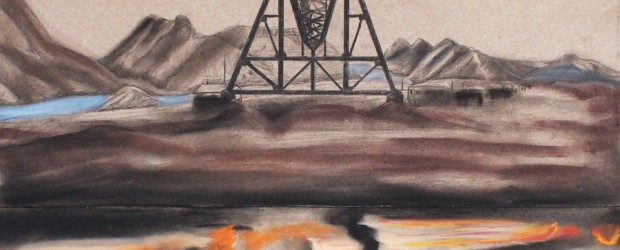Tug of War, 2018
Tug of War, 2018
The churning of the Ocean of Milk was an elaborate process. The Devas took help of the Asuras despite them being nemeses signifies the importance of free-interaction and coordination in Economics. This view, finds great resonance in today’s global economy, where two contrasting forces are at work. Corporate globalization, on the one hand, has led to multinational supply networks, whereas on the other, economic crisis is pushing countries towards protectionism which has led to disintegration of these networks.
The Economics of Manthan, Simran K
To develop this new work, artist duo Prabhakar Pachpute and Rupali Patil have taken their inspiration from the story of Samudra Manthan (the churning of the Ocean by a Mountain). This intriguing episode in Hindu mythology evokes a series of thought-provoking questions about the relations between life, immortality, power and economics. Re-telling the story of the Act of Churning in today’s time allows for a very interesting and critical annotation.
In the story the defeated group of the Devas ask the Supreme God Vishnu to help them regain power of the world, that is being ruled by a group of demons, the Asuras. Vishnu advises that the two rivaling parties together should churn the earth for its milk, a magical potion called ‘Amrit’ (Nectar), which provides strength, fortune and immortality. But instead of working together they start fighting over who gets the largest portion.
As we observe in Samudra Manthan, these kinds of mythological events are fluid and adaptive, although these stories are constantly being retold and re-interpreted, their visuals and metaphors continue to offer strong elements to think about humanity and its relation to the earth. In their woodcut drawings the artists retell the story from a contemporary perspective, linking the idea of churning the Earth to gain power and ‘eternal life’ to the exploitation of resources in today’s global economic context. It is strange, funny, and sad to see how human priorities have not changed much in all this time.
Prabhakar Pachpute
°1986
Prabhakar Pachpute is one of the most prominent and critically acclaimed Indian artists of his generation. He has gained international recognition for a practice in which the use of charcoal drawings on large expanses of walls is often combined with sculptures and light effects, as well as charcoal stop-motion animations, sound and sculptural forms. Pachpute’s work is rooted in an investigation of mining labour and the way mining activity affects the natural and human landscape. Combining field research around the world and personal experience (Pachpute comes from a family of miners), with expressive and surreal imagery, the artist creates unexpected visions and encompassing installations. Prabhakar Pachpute studied sculpture in IKS University, Khairagarh (Chattisgarth, 2009) and at MS University (Baroda, 2011). His work has been shown in international institutions such as Van Abbemuseum (Eindhoven, 2013), DRAF (London, 2014) MACBA (Barcelona, 2015), Parasite (Hong Kong, 2017), Jim Thompson Art Centre (Bangkok, 2017),… and in biennales such as the 31st Sao Paolo Biennale (2014), 5th Fukuoka Asian Art Triennale (Fukuoka 2014), 14th Istanbul biennale (2015),…Pachpute lives and works in Mumbai and Pune. He is represented by Experimenter gallery in Calcutta.
(based on a text by Zasha Colah and Luca Cerizza)
Rupali Patil (IN)
°1984
Rupali Patil creates graphic work, objects and installations. She is interested in artistic reflections on social issues related to scarcity of water or raw materials. In some of her works, she portrays displaced farmers and women in the areas that have been mindlessly industrialized. That imaginary world in undetermined places in the world and, the people who inhabit it, become visual metaphors for visualising the contemporary reality in Rupali's drawings. A Postgraduate from the Graphic Department of the Maharaja Sayaijaro University of Baroda in 2011, Rupali often collaborates with Prabhakar Pachpute in making site-specific installations on themes such as agricultural in relation to the global world and visual arts practices. Her works have been shown in exhibitions such as Eros (Parasite, University Museum and Art Gallery, Hong Kong, 2014), Kamarado (Stedelijk Museum, Amsterdam, 2015), the 14th Istanbul Biennial (2015), Harbinger of Chaos in Bunkier Sztuki Gallery of Contemporary Art (2017). In 2014 Clark House Initiative in Mumbai showed her solo exhibition Everybody Drinks but Nobody Cries. She lives and works in Pune.
Commissioned by STUK for Artefact 2018



